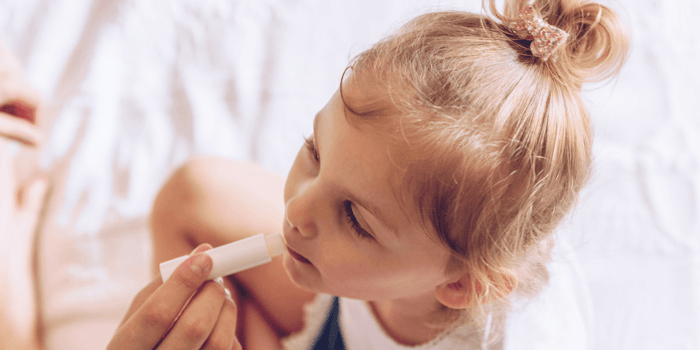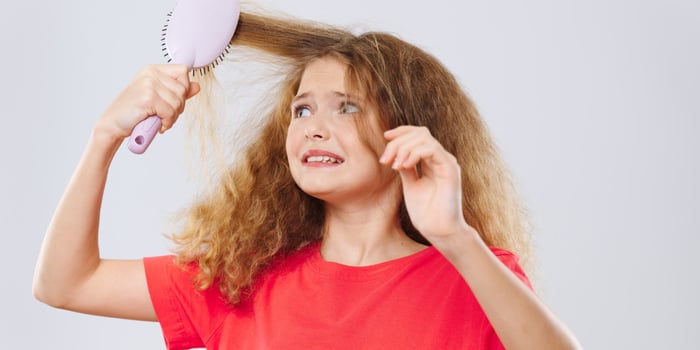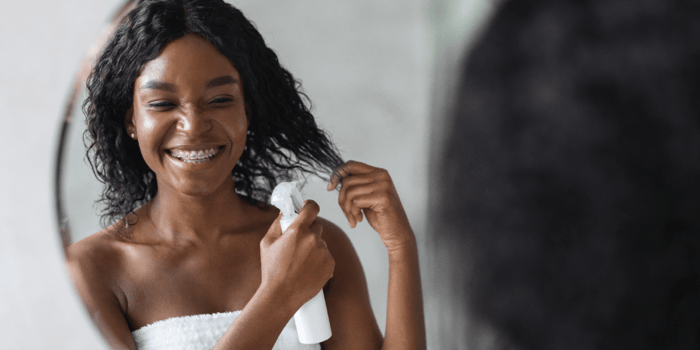Lip balm is a daily essential for many, especially during dry or cold seasons. But did you know that some of the most common ingredients found in mainstream lip balms can actually do more harm than good?
For kids and teenagers—who have more delicate and sensitive skin—it’s especially important to choose lip care products wisely. While many lip balms promise hydration and protection, some contain potentially harmful chemicals that may cause allergic reactions, dryness, hormone disruption, or even long-term health risks.
In this guide, we’ll break down the toxic, irritating, and questionable ingredients often found in lip balms and highlight safer, natural alternatives that nourish and protect lips without unnecessary risks.
🚫 Ingredients to Avoid in Lip Balm
If you want to ensure your child’s lip balm is truly safe and beneficial, here are the top harmful ingredients to watch out for—and why you should avoid them.
1. Petroleum Jelly (Petrolatum)
🔎 What it is: A by-product of crude oil refining.
⚠️ Why avoid it:
-
May contain harmful polycyclic aromatic hydrocarbons (PAHs), some of which are known carcinogens.
-
Creates a barrier over the lips but doesn’t actually hydrate—it only locks in existing moisture.
-
Petroleum extraction contributes to pollution and climate change.
✅ Safer alternatives: Beeswax, shea butter, or plant-based oils (coconut, jojoba).
2. Parabens (Methylparaben, Propylparaben, etc.)
🔎 What it is: A synthetic preservative used to extend shelf life.
⚠️ Why avoid it:
-
Mimics estrogen in the body, potentially disrupting hormones.
-
Linked to early puberty and reproductive health concerns in kids and teens.
-
Can accumulate in the environment and harm aquatic life.
✅ Safer alternatives: Vitamin E, rosemary extract, essential oils.
3. Phthalates (Hidden Under “Fragrance”)
🔎 What it is: Chemicals used to make fragrances last longer and improve texture.
⚠️ Why avoid it:
-
Linked to hormone disruption and developmental delays.
-
Can contribute to early puberty and fertility issues in the long run.
-
Often hidden under vague labels like "fragrance", making them hard to detect.
✅ Safer alternatives: Fragrance-free lip balms or those scented with natural essential oils.
4. Synthetic Fragrances
🔎 What it is: Artificial scents made from petrochemicals and undisclosed chemical blends.
⚠️ Why avoid it:
-
Can cause skin irritation, rashes, and allergic reactions.
-
Some synthetic fragrance chemicals are linked to respiratory issues and hormonal disruptions.
✅ Safer alternatives: Essential oils (vanilla, lavender, peppermint) or unscented formulas.
5. Artificial Colors (Red 40, Yellow 5, etc.)
🔎 What it is: Synthetic dyes often derived from coal tar or petroleum.
⚠️ Why avoid it:
-
Certain dyes, like Red 40, are linked to hyperactivity in children.
-
Long-term exposure may increase the risk of allergic reactions and potential carcinogenic effects.
✅ Safer alternatives: Beetroot powder, fruit extracts, mineral pigments.
6. Lanolin
🔎 What it is: A natural wax from sheep’s wool, used as a moisturizer.
⚠️ Why avoid it:
-
Some people have wool allergies and may experience irritation or breakouts.
-
The extraction process can involve harsh chemicals and ethical concerns about animal treatment.
✅ Safer alternatives: Coconut oil, shea butter, mango butter.
7. Sodium Lauryl Sulfate (SLS)
🔎 What it is: A foaming agent and surfactant found in many beauty products.
⚠️ Why avoid it:
-
Strips away natural lip moisture, leading to dryness and irritation.
-
Can trigger eczema, dermatitis, and sensitivities with long-term use.
✅ Safer alternatives: Aloe vera, natural plant-based oils, beeswax.
8. Silicone-Based Ingredients (Dimethicone, Cyclopentasiloxane, etc.)
🔎 What it is: Synthetic compounds that give lip balms a smooth texture.
⚠️ Why avoid it:
-
Forms a barrier over the lips, preventing natural hydration from penetrating the skin.
-
Does not biodegrade easily, contributing to environmental pollution.
✅ Safer alternatives: Olive oil, castor oil, or jojoba oil.
The Bigger Picture: Why Ingredient Sourcing Matters
When we think about lip balm, we often focus on its effectiveness and safety—but there’s another crucial aspect to consider: how its ingredients are sourced and the impact that sourcing has on people and the planet.
The beauty and personal care industries rely on a global supply chain that affects everything from pollution levels to worker conditions to the sustainability of natural resources. Many of the common ingredients in mainstream lip balms—especially petroleum-based and synthetic additives—come with hidden costs beyond their potential health risks.
Here’s why it’s essential to be mindful of where ingredients come from and the broader socio-economic and environmental consequences of their production.
🌍 Environmental Impact of Lip Balm Ingredients
🚨 Pollution from Petroleum-Based Ingredients
Many commercial lip balms contain petroleum-derived ingredients like petrolatum, mineral oil, and artificial colors. These ingredients come from crude oil, a non-renewable fossil fuel extracted through drilling and refining processes that contribute to:
-
Air pollution from carbon emissions.
-
Water contamination from oil spills.
-
Soil degradation in oil drilling areas.
Additionally, the refining process can leave behind toxic residues, which may leach into the environment and harm ecosystems.
✅ Better Choice: Opt for plant-based alternatives like coconut oil, shea butter, or beeswax, which are biodegradable and have a lower environmental footprint.
🚨 Chemical Waste from Synthetic Dyes & Fragrances
Artificial colors (like Red 40, Yellow 5) and synthetic fragrances in lip balms don’t just affect our bodies—they also harm the environment. These ingredients are:
-
Produced through complex chemical processes that generate toxic byproducts.
-
Washed down drains when we use personal care products, entering water systems.
-
Difficult to break down, contributing to water pollution and harming marine life.
✅ Better Choice: Look for naturally derived pigments (like beetroot powder) and lip balms scented with essential oils instead of synthetic fragrances.
🤲 Ethical & Social Issues in Ingredient Sourcing
🚨 Worker Exploitation in Shea Butter & Cocoa Butter Production
Ingredients like shea butter and cocoa butter are often sourced from West Africa, where child labor and unfair wages have been reported in some supply chains. Without ethical oversight, large corporations can take advantage of vulnerable communities, paying below-living wages and providing unsafe working conditions.
✅ Better Choice: Choose Fair Trade-certified shea butter and cocoa butter to ensure ethical sourcing that supports fair wages and sustainable farming practices.
🚨 The Impact of Bee Farming for Beeswax
Beeswax is a natural and effective alternative to synthetic waxes, but not all beeswax is ethically sourced. Some industrial beekeeping practices:
-
Overharvest honey and wax, depriving bees of essential nutrients.
-
Use pesticides that harm bee populations and biodiversity.
✅ Better Choice: Look for ethically sourced beeswax from sustainable farms that prioritize bee conservation and avoid pesticides.
🚨 The Problem with Palm Oil in Lip Balm
Palm oil is a common ingredient in many personal care products, including some lip balms. However, unsustainable palm oil farming is a major driver of deforestation, leading to:
-
Destruction of rainforests and loss of wildlife habitats (such as for orangutans).
-
High carbon emissions due to land clearing and burning.
-
Exploitative labor practices in some palm oil plantations.
✅ Better Choice: Choose lip balms that are palm oil-free or use RSPO-certified sustainable palm oil to ensure better environmental and ethical practices.
💚 Making More Conscious Choices
By understanding the sourcing, production, and environmental impact of lip balm ingredients, we can make more informed choices that benefit both our health and the planet.
🌱 What to Look For:
✅ Plant-based, biodegradable ingredients (like shea butter, coconut oil, and aloe vera).
✅ Fair Trade-certified ingredients to ensure ethical labor practices.
✅ Eco-friendly packaging (like recyclable or compostable tubes instead of plastic).
✅ Transparent brands that disclose where and how their ingredients are sourced.
🚫 What to Avoid:
❌ Petroleum-based ingredients (like petrolatum and mineral oil).
❌ Synthetic dyes and artificial fragrances (which pollute the environment).
❌ Unethically sourced ingredients (such as non-Fair Trade shea butter or palm oil).
Every purchase we make has an impact beyond ourselves. By choosing clean, ethically sourced lip balms, we’re not just protecting our kids from harmful chemicals—we’re also supporting fair wages, sustainable farming, and a healthier planet.
💡 The Future of Clean, Ethical Beauty
At Popsicle Beauty Club, we’re committed to offering truly safe and ethically sourced beauty products for kids and teens. We believe that clean beauty isn’t just about avoiding toxins—it’s also about making responsible choices that respect people, animals, and the environment.
Many mainstream lip balms remove a few harmful ingredients but still contain petroleum by-products, artificial colors, synthetic fragrances, or preservatives that don’t belong on delicate, sensitive skin. That’s why we go beyond the industry’s loose definitions of “clean” and carefully curate products that align with true non-toxicity, sustainability, and ethical sourcing—so parents can feel confident in every purchase.
So, what should you look for instead? Nature provides plenty of nourishing, protective ingredients that hydrate and heal lips—without hidden toxins. From plant-based butters and oils to naturally derived antioxidants, there are plenty of safer alternatives to synthetic lip balm ingredients. Let’s explore 15 natural, non-toxic ingredients that actually nourish and protect—and why they’re better for your child’s lips. 🌿👇
🌿 15 Natural and Safer Alternative Ingredients for Lip Balm
Now that we’ve covered the harmful ingredients commonly found in mainstream lip balms, let’s explore safer, more natural alternatives that truly nourish and protect lips—without the hidden risks. These ingredients offer real hydration and healing benefits while also being eco-friendly and ethically sourced.
1. Beeswax
✅ Benefits: A natural emollient that creates a protective barrier on the lips while still allowing the skin to breathe. Locks in moisture and has anti-inflammatory properties.
🌱 Why it’s better: Non-toxic, biodegradable, and sustainably sourced, especially when harvested from ethical beekeepers who prioritize bee conservation.
2. Shea Butter
✅ Benefits: Packed with vitamins A, E, and F, shea butter deeply moisturizes and helps repair dry, cracked lips while reducing inflammation.
🌱 Why it’s better: Plant-based and Fair Trade-certified shea butter ensures sustainability and ethical production while offering a petroleum-free alternative.
3. Coconut Oil
✅ Benefits: A powerhouse ingredient with fatty acids that provide deep hydration, plus antimicrobial properties that protect lips from irritation.
🌱 Why it’s better: A renewable, biodegradable, and minimally processed natural oil that’s gentle on sensitive skin.
4. Jojoba Oil
✅ Benefits: Closely mimics the skin’s natural oils, making it an excellent lightweight moisturizer. Rich in antioxidants that protect against environmental stressors.
🌱 Why it’s better: Sustainably sourced and non-comedogenic, meaning it won’t clog pores. Absorbs easily, leaving lips soft and smooth.
5. Sunflower Oil
✅ Benefits: High in essential fatty acids and vitamin E, making it great for moisturizing, softening, and protecting the skin from environmental damage.
🌱 Why it’s better: Non-GMO, cost-effective, and eco-friendly, making it a gentle yet powerful addition to lip balms.
6. Olive Oil
✅ Benefits: Rich in antioxidants and vitamin E, it nourishes and repairs the skin while keeping lips hydrated and supple.
🌱 Why it’s better: A versatile, plant-based, and biodegradable oil that’s widely used in both skincare and culinary applications.
7. Castor Oil
✅ Benefits: A natural humectant that draws moisture into the skin and locks it in, preventing lips from drying out. Has anti-inflammatory properties that help soothe irritation.
🌱 Why it’s better: Biodegradable, derived from castor beans, and deeply moisturizing without synthetic additives.
8. Aloe Vera
✅ Benefits: A cooling, soothing ingredient that hydrates and helps heal dry, chapped lips. Also has anti-inflammatory and antibacterial properties.
🌱 Why it’s better: Harvested from the aloe plant, biodegradable, and naturally gentle, making it ideal for sensitive skin.
9. Beetroot Powder (for natural color)
✅ Benefits: A safe, plant-based way to add a touch of natural color to lip balms, while providing antioxidants, vitamins, and minerals that support skin health.
🌱 Why it’s better: A non-toxic, biodegradable alternative to artificial dyes like Red 40 and Yellow 5.
10. Vitamin E (Tocopherol)
✅ Benefits: A powerful antioxidant that protects skin from free radical damage, soothes irritation, and enhances moisture retention.
🌱 Why it’s better: Often derived from sunflower or wheat germ oil, vitamin E is a natural preservative and deeply nourishing skincare ingredient.
11. Honey
✅ Benefits: A natural humectant, meaning it helps attract and retain moisture in the lips. Also has antibacterial and healing properties.
🌱 Why it’s better: A renewable, widely available ingredient that can be ethically sourced from beekeepers committed to bee conservation.
12. Carnauba Wax
✅ Benefits: A plant-based wax that helps solidify lip balms and provides a smooth, glossy texture without synthetic waxes.
🌱 Why it’s better: Biodegradable and vegan-friendly, making it an excellent alternative to beeswax.
13. Mango Butter
✅ Benefits: Rich in essential fatty acids and antioxidants, mango butter is a highly effective moisturizer that helps heal dry, cracked lips.
🌱 Why it’s better: A natural, plant-based butter that’s often Fair Trade-certified, ensuring both ethical sourcing and sustainability.
14. Rice Bran Oil
✅ Benefits: Packed with vitamins, antioxidants, and fatty acids, this oil helps nourish and protect the skin while maintaining hydration.
🌱 Why it’s better: Sustainably produced, gentle on sensitive skin, and biodegradable.
15. Green Tea Extract
✅ Benefits: A powerful antioxidant-rich ingredient that protects lips from environmental stressors, soothes irritation, and helps reduce inflammation.
🌱 Why it’s better: Derived from renewable green tea leaves, making it a sustainable and natural addition to lip balm formulations.
💚 Choosing Lip Balms with Safe, Natural Ingredients
Making the switch to natural, non-toxic lip balms isn’t just better for your child’s health—it’s also a more sustainable and eco-conscious choice for the planet. By opting for plant-based oils, antioxidant-rich butters, and biodegradable waxes, you’re avoiding harmful chemicals, petroleum-derived ingredients, and synthetic additives that offer little benefit and potential harm.
When shopping for lip balms, always read ingredient labels carefully and look for:
✅ Simple, recognizable ingredients like shea butter, beeswax, or coconut oil.
✅ Natural colorants (like beetroot powder) instead of artificial dyes.
✅ Fair Trade and ethically sourced ingredients to support responsible farming and worker well-being.
✅ Eco-friendly packaging to reduce waste.
By choosing lip care products made with clean, safe, and natural ingredients, you’re giving your kids the nourishment they need—without any of the unnecessary risks. 💖
💖 Final Thoughts: Choose Safer Lip Balms for Kids & Teens
What you put on your lips matters—especially for children and teens, whose skin is more delicate and absorbent. Many mainstream lip balms contain synthetic, petroleum-derived, or potentially harmful chemicals that can cause irritation, disrupt hormones, or pose long-term health risks.
Thankfully, there are safer alternatives that moisturize, protect, and heal lips naturally—without the unnecessary toxins.
When choosing a lip balm, always read ingredient labels carefully, avoid synthetic additives, and opt for natural, plant-based, and non-toxic formulations.
Your child’s lips deserve real nourishment—not hidden toxins.
Curious about which harmful ingredients to avoid in your child's beauty products? Read The Truth About Harmful Beauty Ingredients for Kids to uncover the hidden toxins in mainstream makeup, skincare, and hair care—and discover safer alternatives.














